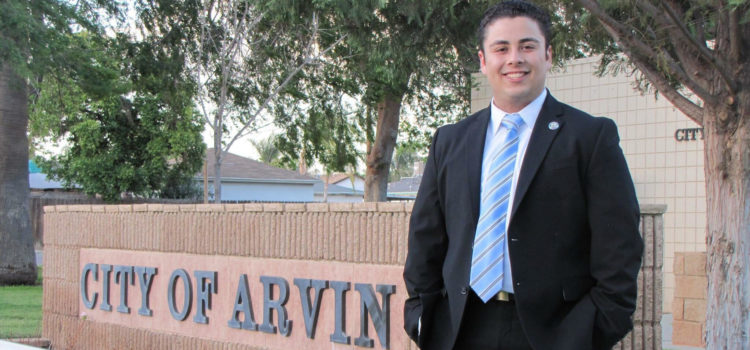
South Kern Sol, News Report, Veronica Morley
Weathering criticism of a proposed ordinance that would regulate the oil and gas industry, Arvin Mayor Jose Gurrola insisted this week that policy changes are being misunderstood and would not amount to a citywide ban.
The regulations, which were first introduced during a November city council meeting, have drawn fire from the oil and gas industry and, most recently, Kern High School District Trustee Jeff Flores. He called out Arvin’s city council during a public board meeting Jan. 9, describing the proposed ordinance as “schizophrenic,” and one that could take away good paying jobs from Arvin residents.
Gurrola insisted this week that the criticism amounts to a lot of misunderstanding and that the city is simply revising a 53-year-old ordinance.
“The current ordinance in effect is so outdated, that the oil industry practically has free reign in Arvin,” Gurrola said. “This [proposed] ordinance allows the oil industry to operate in Arvin, as long as they can follow certain rules that put health and safety of the community first.”
The latest public draft of the ordinance was introduced during a Nov. 7 city council meeting.
“It’s the first update of the oil and gas code since before the moon landing. The 1965 ordinance currently in effect can be printed out on two sheets of paper. This ordinance being proposed is an overdue update that keeps up with new technology as well as balancing industry with the public health and safety of the community,” Gurrola said.
The need to revise the five-decade old ordinance became apparent in late 2016 when the city received a permit from an energy company seeking to use sonar technology in search of oil in Arvin, Gurrola said.
“Some members of the community and the council were not okay with that,” Gurrola said.
But under the current oil ordinance, the city would be forced to approve the permit, Gurrola said city staff told him.
Since the existing ordinance was adopted in 1965, changes in national and state legislation, population, and Arvin City character are not addressed.
The current ordinance doesn’t take into account the National Environmental Policy Act, or the California Environmental Quality Act — two broad legal frameworks that were established to protect the environment. Both were established after the 1965 ordinance.
The new regulations would also address the increase of Arvin’s population. In 1965 the population was about 5,000 residents. It’s now more than 21,000. That has some council members concerned about the oil industry sapping needed drinking water for the oil extraction process according to the proposed ordinance.
The changes would also address the changing character of Arvin. Not only has population growth made it necessary to address water usage in oil and gas production, but also the growth of neighborhoods and changes in technology and science must be addressed.
The proposed ordinance would address a variety of issues, including : limited water supplies,, surface spills and leaks, air pollution, particulate matter and odors, potentially harmful public health effects, the impact on aesthetics and residential uses and closure and abandonment.
Most important, Gurrola said, is the potential for the ordinance to protect the health of those in Arvin. He pointed to an incident in 2014 when a gas leak from a pipeline connected to an active oil operation led to several families living in homes south of Arvin High School to be evacuated for more than eight months.
“Arvin is known for having bad air quality and water contaminated with Arsenic and 123-TCP,” Gurrola said.
“The oil industry plays a direct part in the pollution that is emitted in the air and has a risk of further contaminating our water.”
The latest draft of the new ordinance is available for public view as well as the staff report. It can be found on page 56:
https://www.arvin.org/wp-content/uploads/2015/08/110717-Arvin-City-Council-Mtg-Agenda.pdf